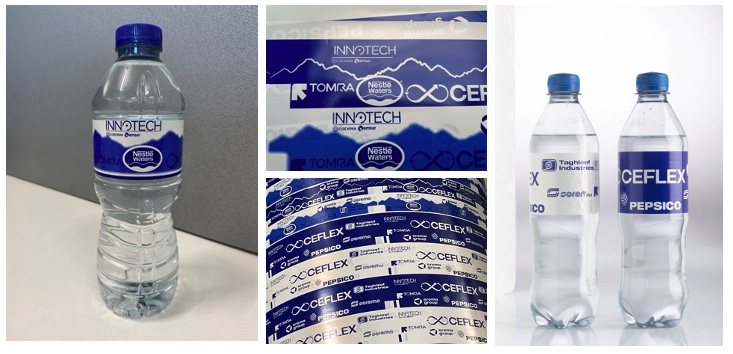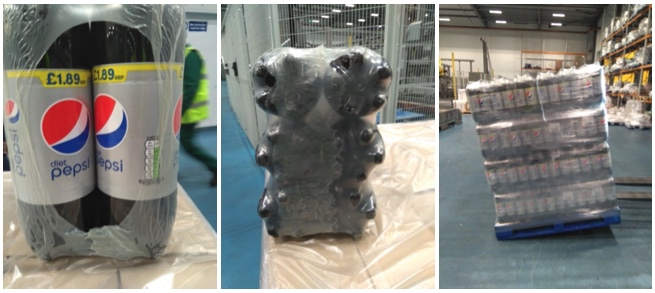Project and stakeholders are looking to create the first commercial waste processing plant based around its Quality Recycling Process (QRP).
Flexible packaging from household waste has very low recycling rates in Europe, with only 17% of polyethylene (PE) sorted and recycled today, but a group of circular economy experts now hope to close this gap by putting the right sorting and recycling pieces all together.
“The Quality Recycling Process (QRP) enables a much greater percentage of flexible packaging to be returned to the economy – and in the quantities and the qualities needed to meet the requirements of new end markets,” said Dana Mosora, technology workstream lead at CEFLEX, a circular economy project with more than 180 European companies, associations and organisations from the entire value chain.
CEFLEX developed QRP to offer a more valuable way to mechanically recycle a higher proportion of plastic from flexible packaging. It uses combination of four steps each delivered by an existing technology, including advanced sorting techniques, hot washing, extrusion with extra filtration and deodorisation. However, while these technologies have been successfully trialled and implemented in different facilities throughout Europe, they have yet to feature in the same commercial site.

“Today, there is no single plant which has all four technologies in a sequence, which would make it a fully blown Quality Recycling Process and enable the highest quality recyclate possible from flexible packaging,” explains Dana.
Over the last several years, CEFLEX has tested its QRP in new and existing waste streams, including the so-called ‘310 bale’ of flexible packaging, which is a bundle of materials often made up of different types of PE films.
CEFLEX found that if a single 310 bale went through QRP, a minimum of 20-25% of recyclate would be produced to one of the highest grades (PE Film Natural) and about 60-55% of the remaining material would be leftover for other rigid commercial activities, such as making laundry baskets or bottle caps.
Dana explains that this is why CEFLEX has now embarked on the journey to build an industrial scale QRP demonstration plant with a goal to be running commercially by end of 2023.
“This will help us demonstrate the economic viability of the solution at a large industrial scale,” said Dana, adding that CEFLEX are now looking for more partners to join and help co-design, fund, manage and run the plant. “We need to incorporate more partners in order to build the demo at an industrial scale and achieve better quality, quantity, and, most importantly, to validate the business model.”
Foundations of success
The business model for a new circular plant already has a strong economic foundation after CEFLEX funded research that found any investments made into the project can eventually be offset by the profits generated in the long run.
Professor Steven De Meester from Ghent University in Belgium worked with CEFLEX on the affordability of developing QRP and his team considered the investments needed for new equipment, like hot washing, as well as the general operating costs.
The researchers used a range of market data to create a model that analyzed the composition of a typical 310 bale of flexible packaging and how much it would cost for it to go through a QRP plant and the revenues this could then generate.
“For every waste composition that you put in the model we can see how they are separated on every product level or every material type,” said Prof. De Meester, adding that this in turn allowed them to extract value ranges of the reclaimed materials and calculate prices and revenues for how much the subsequent recyclate could be sold for.
This analysis found that it could cost around €520 for each ton of a ‘310’ materials to pass through a QRP plan, which incorporates the capital investment in QRP technologies like hot and cold washing, as well as additional sorting processes. However, if the output experiences high enough demand it could see a revenue generated upwards of €600 per ton, leaving a net profit of €80 per ton and enough income to guarantee long-term profitability.
Building the business case
The final piece of the QRP’s commercial puzzle is having established and profitable markets for recycled flexible packaging materials. This saw CEFLEX work with another group of researchers to explore how QRP could supply new and existing markets with a source of materials that can compete with virgin plastic.
Professor Kim Ragaert, Chair of Circular Plastics at Maastricht University in the Netherlands, led a range of trials on using the recycled output from 310 bales and found that the reclaimed materials can be used for new packaging film applications as well as robust film and injection moulding too.
“A PE collation shrink film has been made with 30% recycled content blended from the QRP materials,” said Prof. Ragaert, adding that this “performed very well” when wrapped around a bundle of Pepsi bottles.
The trials were also able to demonstrate a 30% threshold of recycled content in resealable PP pouches, which Prof. Ragaert described as good enough to meet the needed functionality and production process.
“That is very promising because the recycled content threshold of 30% is quite important for many companies,” she said.
Increasingly, plastic businesses are calling for a 30% minimum threshold of recycled materials in packaging, which they argue is needed to galvanise the supply and demand for circularity – in September, Plastics Europe went one step further and demanded a mandatory EU recycled content target for plastics packaging of 30% by 2030.

According to Prof. Ragaert, recycled PE through QRP is increasingly showing the sector that this is economically possible and that their trials are just a sample of a more circular future. Her team have also examined applications for PO and PP, as well as how such recycled polymers can be used for more high value rigid applications, where they found a range of other valuable markets that can reinforce the business model for QRP.
“We are now looking at irrigation pipes, we are looking at pallets, we are looking at home and gardening applications,” said Prof. Ragaert, adding that her team are already preparing more trials to spark even greater circular supply and demand of recycled flexible packaging.
